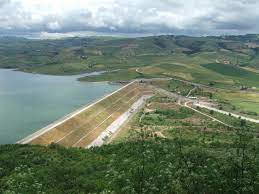EURECA
Good Practices
Conza Lake Oasis- WWF Area of Scientific Interest.
Country:Main Subject:
Description:
The establishment of the World Wide Fund for Nature (WWF) dates back to 1961, with a primary objective of conserving biodiversity and advocating for sustainable environmental practices. Since 1966, WWF has been active in Italy, establishing the WWF Oasis System in 1967. These oases, among the earliest in Europe, constitute a multifaceted network of protected areas managed by a private association. They serve as sanctuaries for land and biodiversity conservation while functioning as educational hubs, fostering public awareness regarding conservation principles. The organization's endeavours are geared towards nature conservation and sustainable development in Italy, with a focus on environmental protection and biodiversity preservation.
Located in Italy's inland southern regions, the WWF Oasis "Lake Conza" encompasses 800 hectares and holds significant naturalistic value. Originating as an artificial lake, its construction commenced in 1972, facilitated by a dam designed for water accumulation from the Ofanto River, primarily for irrigation purposes. Operational since 1992, the dam encompasses a basin of 252 km², with a reservoir capacity of 63 million m³, serving irrigation and, since 2013, potable water supply purposes. Fed by the Ofanto River, which originates between Nusco and Torella dei Lombardi and flows into the Adriatic Sea, the Conza della Campania Dam plays a pivotal role in water resource management.
Designated as a WWF Oasis in 1999, Lake Conza holds national and international significance owing to its diverse avifauna, serving as a vital stopover for migrating bird species between Africa and Europe. Recognized as a Fauna Protection Oasis by the European Union, it is designated as a Special Area of Conservation (SAC) and Special Protection Area (SPA), harboring endangered animal species and natural habitats. The oasis serves as a sanctuary for various mammals, including badgers, foxes, and otters, with the most significant heron colony in southern Italy. It serves as a crucial migration crossroads for numerous bird species, including cranes, birds of prey, storks, and ducks.
The oasis boasts a rich flora and fauna, comprising approximately 140 bird species, including breeding and migratory varieties. Fishing is permitted year-round with government authorization, while access to the dam area is restricted. Managed by Dr. Marcello Giannotti, the Oasis conducts educational workshops, including "Tradizional-Mente" (Tradition-of-Mind), focusing on biodiversity conservation and traditional farming practices. It offers guided tours, environmental education sessions for schools, and various programs such as wildlife observation areas for ducks and canoe tours.
Accessible to the public, the oasis features two trails: the Nature Trail, offering a serene walk with an artificial pond and an educational viewpoint, and the White Stork Trail, leading to wildlife zones and an ancient orchard showcasing six apple varieties indigenous to the area. WWF's commitment entails expanding activities within the oases, enhancing their accessibility (including virtual components), organizing and participating in conferences and public events, generating project observations and documents, engaging in committees and councils, conducting events and awareness campaigns, reporting environmental violations, and providing adult environmental education.
In essence, the WWF Oasis of Lake Conza serves as a pivotal conservation site, boasting diverse flora and fauna while fostering environmental education and sustainable practices in Italy.
Reference links:
Email: lagoconza@wwf.it
Website: https://oasiwwflagodiconza.org/
Facebook: www.facebook.com/oasiwwflagodiconza
Instagram: @lagodiconza
Facebook: Centro di Educazione Ambientale
- http://www.comune.conzadellacampania.av.it/
- https://infoirpinia.it/oasi-wwf-lago-di-conza-una-meraviglia-naturalistica-che-torna-a-vivere/
- https://www.pescareonline.it/blog/p/diga_di_conza_della_campania.htm
- https://sistemairpinia.provincia.avellino.it/index.php/it/luoghi/oasi-wwf-lago-di-conza
- https://www.viaggioinirpinia.it/lago-di-conza/
- https://www.viaggioinirpinia.it/il-borgo-di-pietra-e-loasi-wwf-lago-di-conza/
- https://www.viaggioinirpinia.it/oasi-wwf-lago-di-conza-tra-aironi-e-lontre/
- https://www.meravigliosacampania.it/news/oasi-wwf-lago-di-conza-lincantevole-lago-nascosto-della-campania/
- https://www.impresadiretta.net/atripalda/categories/20-video/219-le-bellezze-dell-irpinia-oasi-wwf-lago-di-conza.html
- https://www.wwf.it/chi-siamo/presenza-sul-territorio/organizzazioni-locali/wwf-silentum/
SDG direct/ indirect short justification:
Clean Water and Sanitation (SDG 6): The dam serves as a vital source of clean water, crucial for personal consumption and purification. This directly contributes to SDG 6 by providing sustainable access to clean water, especially in rural areas surrounding the dam.
Justification for other SDGs:
3. Good health and well-being (SDG 3): The management of the oasis park fosters a healthy environment in harmony with nature, aligning with SDG 3.
9. Industry, innovation and Infrastructure (SDG 9): The irrigation water management system significantly contributes to local agriculture.
11. Sustainable Cities and Communities (SDG 11): The oasis promotes sustainable water use, supporting the development of sustainable communities, with a focus on adult education through its training centre.
12. Responsible Consumption and Production (SDG 12): The training centre facilitates various educational activities aimed at promoting responsible water consumption practices.
13. Climate Action (SDG 13): The oasis protects local fauna and flora, creating a sheltered environment for various species of insects, reptiles, birds, and wild animals.
14. Life below Water (SDG 14): The oasis safeguards local aquatic life and habitats, providing protection for numerous species of fish and aquatic plants.
15. Life on Land (SDG 15): The oasis actively protects and manages terrestrial ecosystems, supporting biodiversity conservation efforts.
Keywords:
City:
Location:
Questions:
- What are the main objectives and functions of the WWF Oasis of Lake Conza, and how does it contribute to biodiversity conservation in Italy?
- How did Lake Conza come into existence, and what role does the dam play in the conservation efforts of the Oasis?
- What makes the WWF Oasis of Lake Conza significant at both national and international levels, particularly in terms of its Fauna Protection Oasis designation and its role as a Special Area of Conservation and Special Protection Area?
- What are some of the activities and initiatives conducted by the Oasis, and how do they contribute to environmental education and sustainable practices, as mentioned in the article?
Authors:
Agostino Cefalo for Gramigna ODV


 Pictures:
Pictures:



